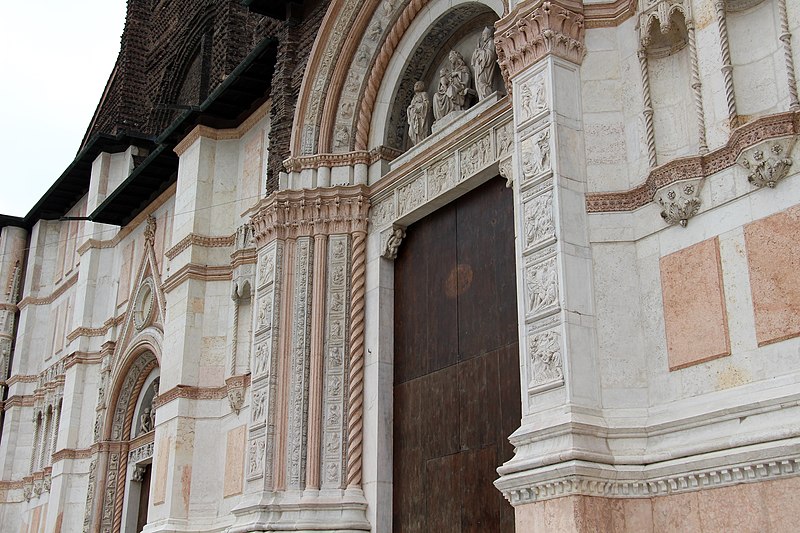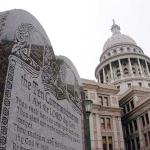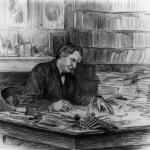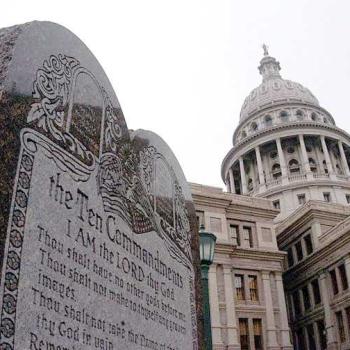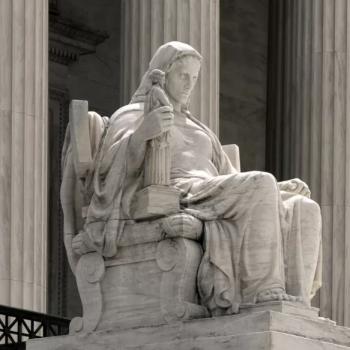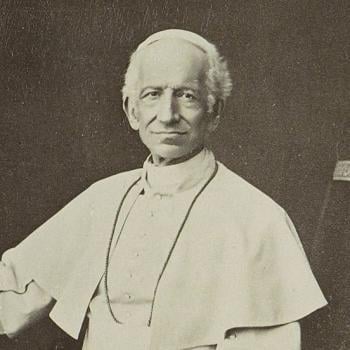Even geniuses can have rough patches. One of Michelangelo’s major works, a huge bronze statue of Pope Julius II, was destroyed only three years after it was completed. And then the bronze was melted down and made into a cannon nicknamed “Julius.” The statue was commissioned by Pope Julius II shortly before Michelangelo began work on the Sistine Chapel ceiling. The story behind the creation of the statue tells us a lot about the contentious relationship between the artist and the Pope.
Pope Julius II (r. 1503-1515) summoned the Florentine artist Michelangelo Buonarroti (1475-1564), then 30 years old, to Rome in 1505. This was shortly after Michelangelo had completed one of his most famous works, the marble statue of David. The artist was asked to sculpt the Pope’s huge marble tomb, a project that would never be finished as originally envisioned. But that’s another story. Michelangelo accepted the commission. And then he spent the next eight months in Carrara, making plans for the forty figures requested for the tomb and choosing the best marble.
To an artist, eight months of preparation for such a large and important project were not unreasonable. But Pope Julius II grew angry that he wasn’t seeing Michelangelo sculpting something. He had given the artist a generous advance payment; what was he doing with that money? And when word of the Pope’s anger reached Michelangelo, the artist panicked and fled to Florence. Soon the leaders of Florence received letters from Rome demanding they send the artist back.
An Angry Pope, a New Commission
In 1506 Pope Julius II led an army to retake the papal cities of Perugia and Bologna from usurpers — again, another long story — which he accomplished. Meanwhile, wiser heads had persuaded Michelangelo that he must go to the Pope and apologize. The artist traveled to Bologna to face Julius and his famous bad temper. The oldest account of this is from an architect named Giorgio Vasari (1511-1574), who recorded the encounter in a book called The Lives of the Most Excellent Painters, Sculptors, and Architects.
He knelt before the Pope, who looked wrathfully at him, and said as if in anger: “Instead of coming to us, you have waited for us to come and find you,” inferring that Bologna is nearer Florence than Rome. Michelangelo spread his hands and humbly asked for pardon in a loud voice, saying he had acted in anger through being driven away, and that he hoped for forgiveness for his error. The bishop who presented him made excuses, saying that such men are ignorant of everything except their art. At this the Pope waxed wroth, and striking the bishop with a mace he was holding, said: “It is you who are ignorant, to reproach him when we say nothing.”
Vasari tells us that the mace-wielding Pope was then appeased and asked Michelangelo to make a bronze statue of him, looking heroic. The statue was to be placed in front of the Basilica of San Petronio in Bologna, where Julius had once served as Bishop. And so, for the next year and a half, Michelangelo worked on the statue project in Bologna.
The Bronze Statue by Michelangelo of Pope Julius II
Making large bronze statues during the Renaissance period required starting with a clay model. That part of the project went well enough, and the Pope approved Michelangelo’s model. But bronze casting is tricky. First, a mold was made of the clay model using a “lost wax” technique, and then the melted bronze is poured into the mold. A lot can go wrong, and the first casting of the big statue failed. But the second succeeded, and with great fanfare the statue was installed into the façade of the Basilica of San Petronio in February 1508.
We don’t know what the statue looked like. All we have of it is a rough sketch in Michelangelo’s hand, which shows a seated figure dressed as a Pope. There is an old anecdote in which Julius asked Michelangelo to put a sword in his hand. But some eyewitness descriptions don’t mention a sword.
Once the statue was in place, Michelangelo was free to return to Rome. That same year, 1508, Michelangelo began painting the ceiling of the Sistine Chapel.
The End of the Statue
The ruler of Bologna that Julius II deposed in 1506 was named Giovanni II Bentivoglio. The Bentivoglio family had ruled Bologna since 1443, but somehow they did so without formal titles or official recognition from outside Bologna. Giovanni did not live long after he was deposed. But in 1511 a son of Giovanni’s, Annibale II Bentivoglio, was able to take the city back. And soon after that he ordered the statue of Julius II to be pulled down.
Michelangelo’s statue was “broken into pieces, and its head was thrown into the square,” according to one account. And then the bronze pieces were sold for scrap. “Michelangelo’s sculpture became a cannon in the arsenal of Duke Alfonso de Ferrara, although one that honored its origins by being nicknamed ‘Julius,'” wrote Allison McNearney in The Daily Beast (January 5, 2018).
In 1512 the Bentivoglio family was ousted again, and Papal rule of Bologna resumed.
Postscript
This was not the only time a Duke of Ferrara was in receipt of bronze that was linked to a great artist. A few years earlier Leonardo da Vinci had been commissioned by the Duke of Milan to produce a huge equestrian statue honoring the Duke’s father. The Duke acquired 70 tons of bronze to make it. Da Vinci spent a few years in preparation, studying horse anatomy and planning how the parts of the statue might be cast. By 1494 da Vinci had produced the clay models and was ready to begin casting. But then King Charles VIII of France invaded the Italian Peninsula. The Duke of Milan sent the seventy tons of bronze to his father-in-law, the Duke of Ferrara, to be made into cannon balls for defense. That duke was the father of the one who bought the Michelangelo bronze.
The grand equestrian statue was never cast. As a consolation, the Duke of Milan asked Leonardo da Vinci to paint something nice on the wall of a building on his property. And that is how The Last Supper came to be.
In 1999 restorers working in the church of San Pietro in Vincoli, Rome, made an astonishing discovery. A long-neglected marble statue had been stored away in an inconspicuous spot. It was covered with, possibly, centuries of grime and dust. When the restorers cleaned it and got a good look, they realized they had found something special. A symposium of scholars was convened, and they all agreed the statue, which depicts a reclining Pope Julius II, bore all the hallmarks of a work by Michelangelo. For years the statue had been attributed to another sculptor, an assumption based on Giorgio Vasari’s book.
Professor Christoph Frommel, a leading Michelangelo expert and director of Rome’s Hertziana Library, said, “The face shows the very intense interior meditation of someone awakening to paradise. The face and hands look absolutely like Michelangelo. The clothing is unfinished but it looks like Michelangelo too.” See Philip Whillan, “Michelangelo’s lost statue finally dusted off,” in The Guardian, April 8, 1999.
